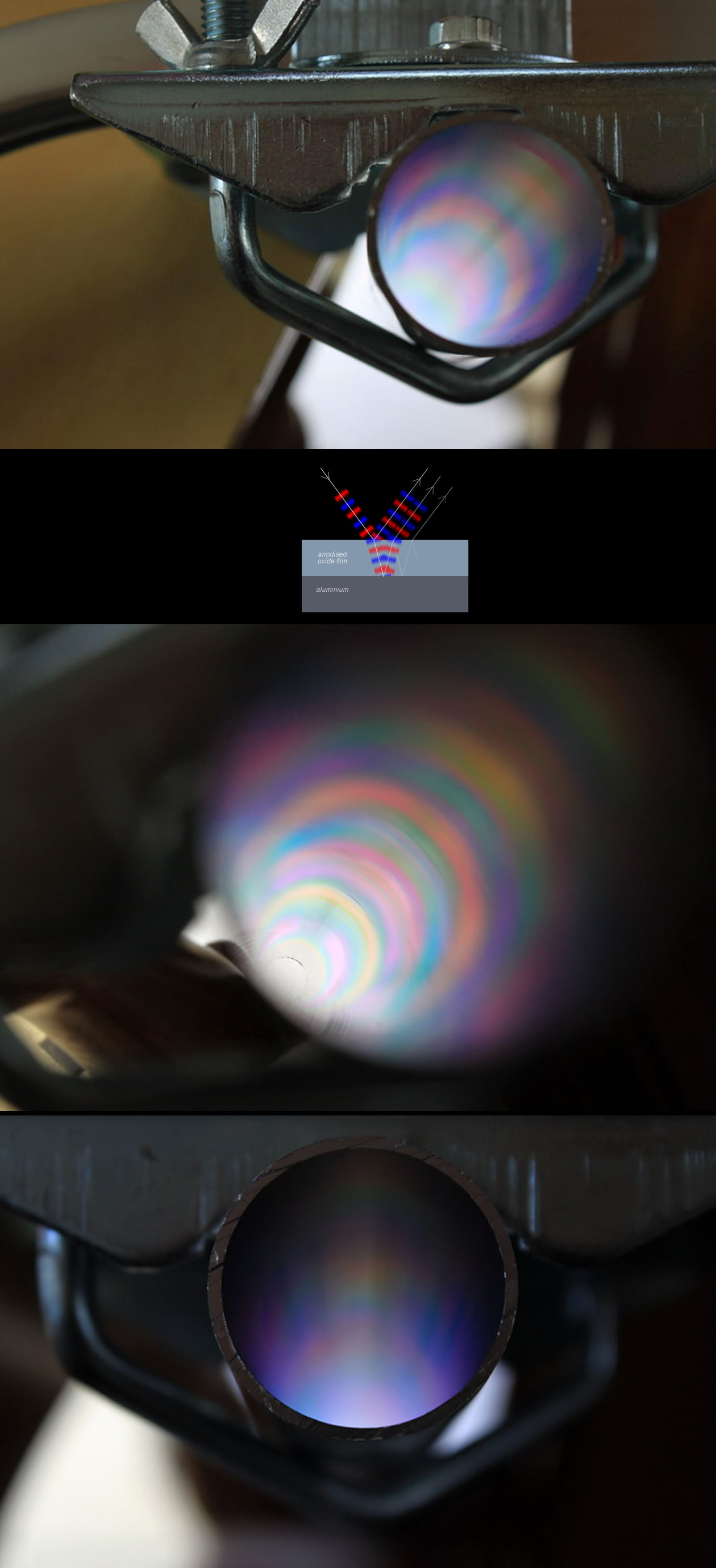
Not a nuclear reactor
but strange colours inside a TV aerial mast. Images by Graham A Stephen (site). |


| About - Submit | Optics Picture of the Day | Galleries | Previous | Next | Today |
| We were puzzled by these colours. Graham Stephen's research found that shotgun choke tubes show colour rings after a good cleaning. Glass capillaries can also show internal colours. Both suggest interference in a glassy or transparent film. Aluminium is a highly reactive metal. In contact with air it rapidly forms a thin surface layer of oxide which stops further oxidation. However, the layer is only a few atoms thick and to confer better corrosion resistance the metal is often 'anodised'. The work is made the positive electrode in an electrolytic bath and the oxide film grown in thickness. Sometimes for decorative purposes the film is dyed but that is not the case here. Why are such intense colours not seen on the outer tube surface? Perhaps multiple reflections along the tube help as does the relatively small and distant aperture through which the light enters the tube. More experiments! |
| Thin film interference: Light waves reflect from the film top and bottom surfaces. The two outgoing waves overlap and interfere. For a given colour, the waves in certain directions are in phase and give brightness. Other colours are in phase at different angles. The colours of soap bubbles and oil films are thin film interference. |